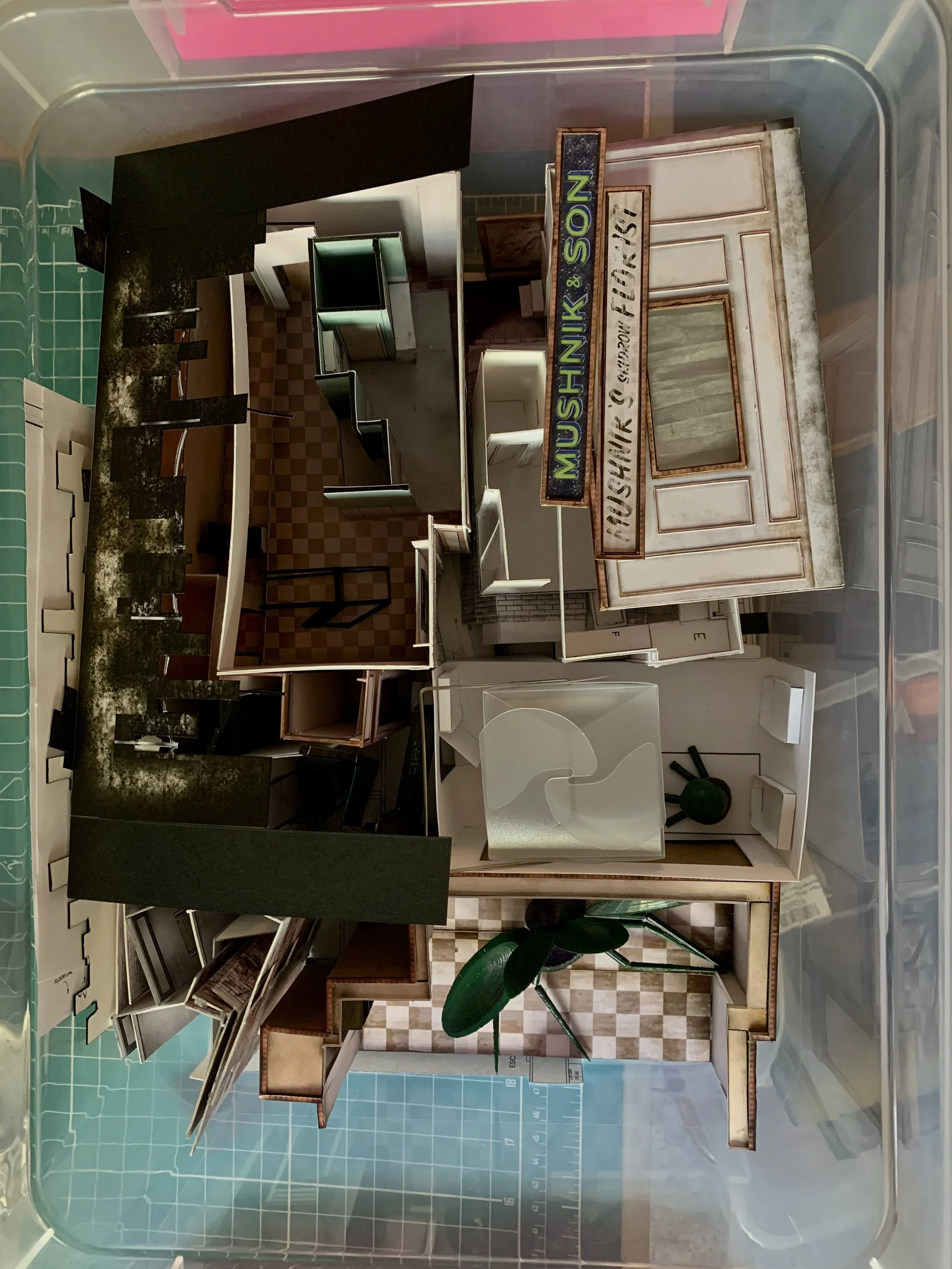I’ve been avoiding this post. Obviously, months of avoidance. We’ve shifted onward, things left where they lie, everyone isn’t thinking about this thing specifically anymore. Myself included. I spent the summer focused on moving into a new house, and also battling a wave of apathy and anxiety that decided to overtake me. And, truthfully, I knew this post would be “it.” Totally arbitrary considering this show hasn’t been a reality since March. Still, there was some secret small part of me that illogically attached putting off this post with keeping something of the process in reserve; like Shrodingers cat, at once alive and dead, all possibilities in existence so long as I left the box closed. But, cruelty to animals aside, time to open the box. And besides, this is arguably the most fun part to witness aside from the actual show.
As mentioned in the post about the white model, models are kind of the rockstars of the scenic design world. More and more, digital renderings are becoming more common as a modeling tool as opposed to physically building the model. I’m personally all for both methods. I think there’s place and space for all the ways we choose to communicate as artists; using the method that best fits the situation rather than clinging to or creating arbitrary standards. In the case of Little Shop, I made a physical model. What follows are the pictures of a “scene by scene” I created using this model. Because the show was halted before actors could get into rehearsal, these depictions are mostly from my own musings, going off of conversations with the director and the rest of the creative team. No doubt the director and actors would have brought more vigor and nuance to these static shadows, but given our circumstances, this is what I built with what I had.
Pre-Show
Opening “Little Shop of Horrors”
Skid Row 1
Skid Row 2
Skid Row 3
Da Doop
Grow for Me
WSKID
Ya Never Know
Somewhere That’s Green
Closed for Renovation
Feed Me (Git It)
Transition to Dentist Office
Dentist Office 1
Now (Just the Gas)
End of Act 1
Intermission
Call Back in the Morning
Suddenly Seymour
Suppertime
Meek Shall Inherit 1
Meek Shall Inherit 2
Somewhere That’s Green Reprise
Don’t Feed the Plants
Here’s to all of us. The whole team who only got to dream this. May the day come where we get to make it real. But until then….
Goodnight love

























